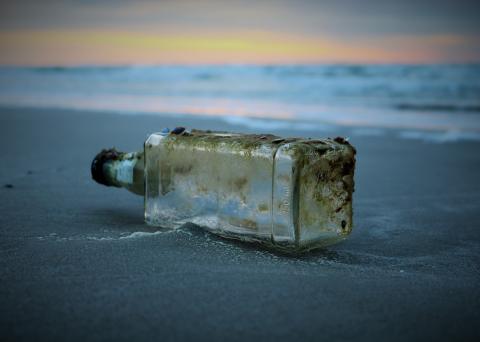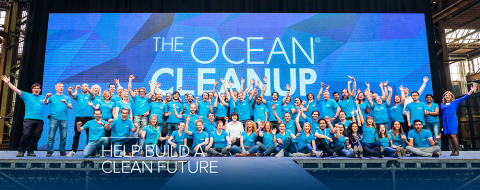Feats of Engineering: The Ocean Clean-Up Machine
August 28, 2018American author James A. Michener once wrote, “Scientists dream about doing great things. Engineers do them.” At Capitol Technology University our motto is “find a way or make one.” All of our programs involve hands-on learning and doing, and we want to show support for our fellow makers.
Part of our mission is to prepare our students to contribute to evolving the global community. In this series, we’ll explore some amazing makers with big dreams who are out in the world doing some great engineering right now.
Boyan Slat was in high school when he went on a vacation that changed his life. While diving in Greece he found that as soon as he went underwater he was completely surrounded by plastic. “There were more plastic bags than fish,” he told source MNN. “That was the moment I realized it was a huge issue and that environmental issues are really the biggest problems my generation will face.”
Determined to make a difference, Slat enrolled at Delft University of Technology as an aerospace engineering major. With only a little more education behind him he unveiled his ocean cleanup concept at TEDxDelft. While his idea for a series of booms that could sweep the water was well received, it didn’t gain much traction.
Consumed by the idea, at the age of 18, Slat made the difficult decision to drop out of school to pursue his passion. He crowdfunded the resources to create a team of employees and volunteers for something he called The Ocean Cleanup project. Together he hoped they could start to tackle the Great Pacific Garbage Patch.
In 2015 the Ocean Cleanup project deployed 30 boats pulling collection trawls behind them through the Great Pacific Garbage Patch. They dredged up 1.2 million plastic samples, and they didn’t even pull through the entire span of the patch. The team classified all of the samples they brought back in order to better understand the plastic problem at hand.
"To accurately quantify a problem of this size, we had to do research at a scale that had never been done before," said Boyan Slat.
The Ocean Cleanup is also responsible for the first ever aerial survey of the Garbage Patch, the data from which, combined with their sorting research, revealed the ultimate size of the problem. According to their data, The Great Pacific Garbage Patch measures 1.6 million km^2 and contains approximately 1.2 trillion pieces of plastic. It is enormous, and it seems to just be getting bigger.
Slat’s proposed design for a clean-up machine is a series of large floating booms attached to anchors floating deep beneath the waves. Previous ideas had run into issues with trying to attach booms like these to the ocean floor. Giving the booms the ability to float and move around with the flow of the ocean, but not so much that they are prevented from gathering the plastic, was the revolutionary bit of engineering developed by Slat.
The machine works a little like a coastline, gathering trash and pulling it to its center. It will run powered entirely by solar power, eliminating the possibility of a disastrous leak or spill from an alternate power source. A boat will then be scheduled to go out periodically to collect the garbage. To help continue to fund the project, the Ocean Clean Up intends to recycle the plastic they gather into new useable items for resale.
It was officially announced that the machine would be deployed on a small scale into the Garbage Patch in 2018. One thing is clear, Boyan Slat and his team are on a mission and they intend to find a way or make one.




